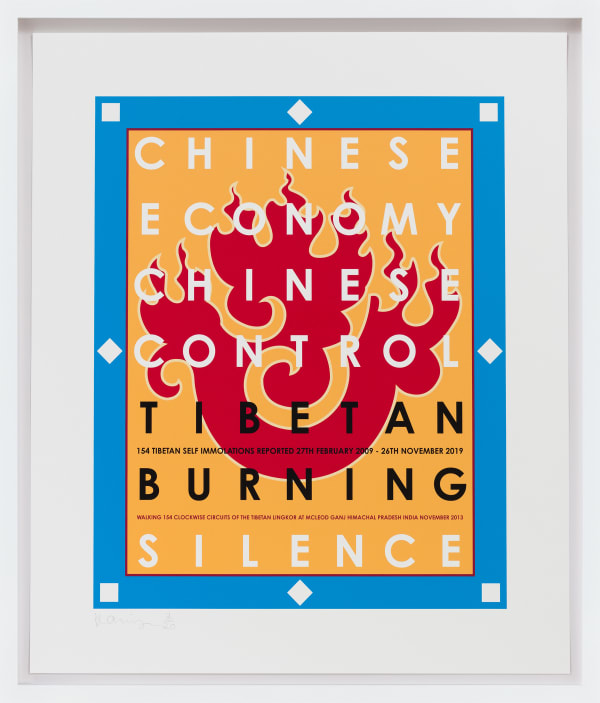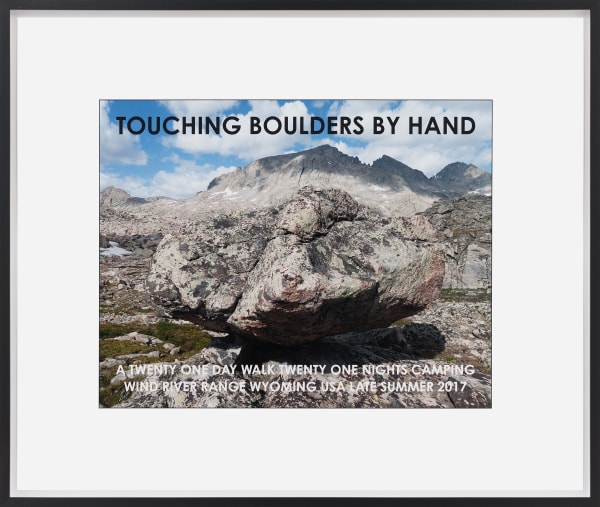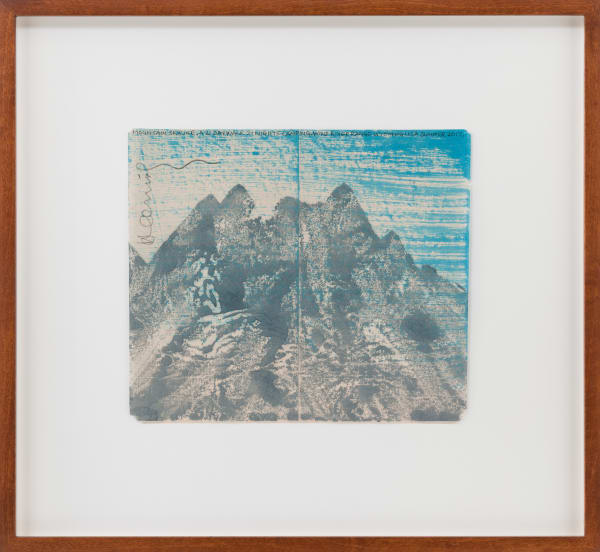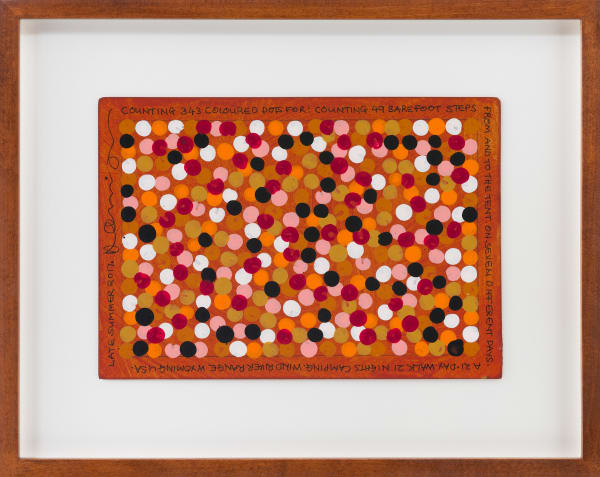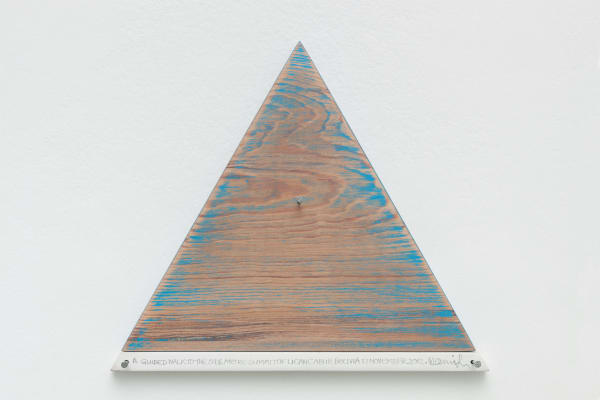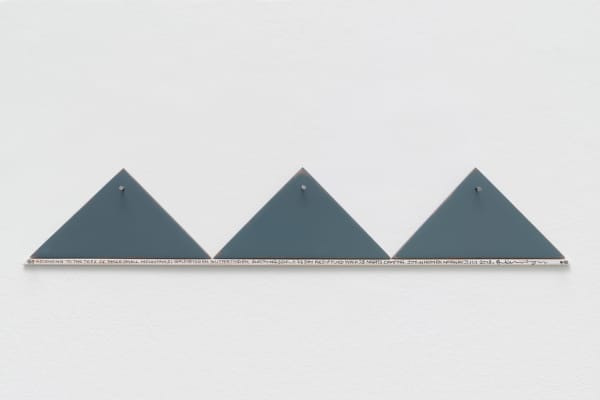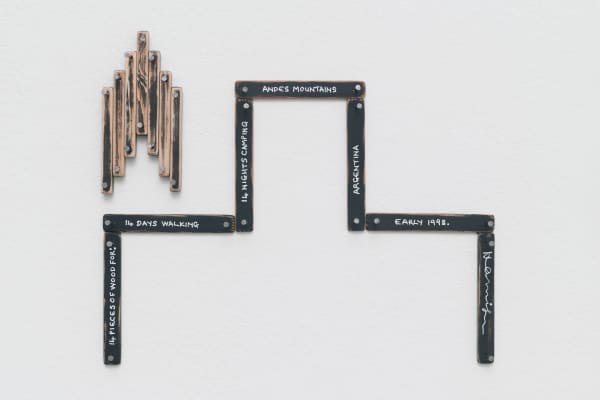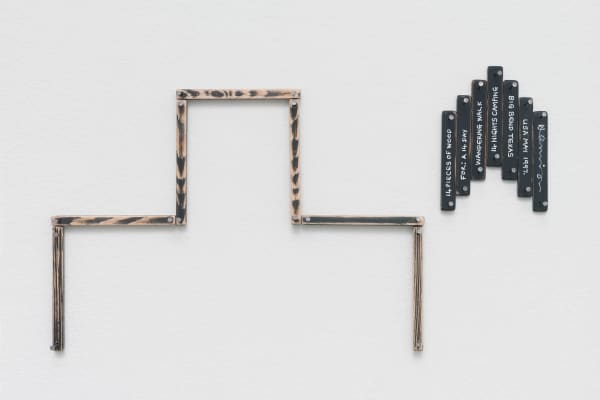-

-
At the age of 27, after completing a coast to coast walk through England of just over a thousand miles, Hamish Fulton made the decision “to make art resulting only from the experience of individual walks”. Ever since then, he has been at the forefront of that handful of artists who genuinely extend the horizons of art, move their audience, and ask what kind of activities could constitute artmaking. Each of Fulton’s works can be seen as the translation of a particular walking journey he has undertaken in a specified part of the world into drawings, photographs, woodwork or wall texts. Without preaching, through a rare and touching simplicity, they encourage us to reconsider our relationship with nature.
-
-
PRINTS
To further disrupt the representational ability of images, Fulton combines them with words. This allows him to show without portraying, to say without explaining, to name the landscape without containing it. The prints which result from his walks offer a profound meditative intensity, which makes the spectator think about the itinerary but also about the idea of limit, of boundary.
-
“I employ words because they are independent of any one language or any one medium and can exist (more or less) in any size or colour... I start with an experience, not a material. Every walk I make is recorded in words. I do not offer the relief of wordless art.”– Hamish Fulton
-
-
WORKS ON PAPER
Fulton’s practice consists of producing artworks that attempt to recover the experience of a delineated walk. For example, using drawings made during these tours, he later processes the respective experiences. Therefore, the final drawings and paintings often do not appear completed, but rather sit playfully on the surface of the paper that accompanied the artist on his journey. Through the placement of words on his drawings and paintings, the works are given a relational function in respect to the specific walk the text refers to.
-
-
WOODWORKS
Fulton is one of a generation of artists who questions the form that sculpture could take: “What I build is an experience, not a sculpture. My wish is to leave as few traces of my passing as possible. My walking experiences are the reverse of creating sculptural changes, subtractions or additions to the land.” Therefore, he works with modest, light materials, like wood offcuts and ribbons to create simple objects, which evoke the changes of scale in the landscape, the features in the course of travelling or the rhythms of nature.
-
-
-
PHOTOGRAPHS
Similar to his drawings, Fulton does not use photography for the purposes of documentation or the representation of reality. Instead, the click of his camera’s shutter commemorates an occasion of „good feeling”, moments in which his relationship with the natural world is well realized and is reverently actual. In his pictures, everything derives from what cannot be shown: walking, camping, moving through the landscape. Through suggesting an idea of the felt experience, the photographs function as metonyms for the walk, just as the walk itself functions as a metonym for the wider, more encompassing view of life being lived as the journey is being made.
-
 Hamish FultonFootpath, Iceland 2008, 2008framed photograph with textpaper size:
Hamish FultonFootpath, Iceland 2008, 2008framed photograph with textpaper size:
46 x 31 cm / 18 1/16 x 12 3/16 ins
framed dimensions:
89 x 71 x 5 cm / 35 x 28 x 2 in -
 Hamish FultonBoulder, Iceland 2008, 2008framed photograph with textpaper size:
Hamish FultonBoulder, Iceland 2008, 2008framed photograph with textpaper size:
32 x 45.5 cm / 12 9/16 x 17 14/16 in
framed dimensions:
73 x 85 x 5 cm / 28 3/4 x 33 1/2 x 2 in


